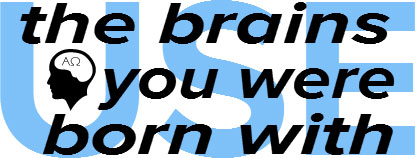Please do not tell me Trump is not doing a great job. Just look at the numbers contained in this article. Putting aside the idiotic way this information is presented just compare the 2016 with 2017. Naturally, even 43,800 jobs anywhere near DC is too many but compare that with over 720,000 the previous year and Trump is doing a marvelous job. Of course, the real question that needs asking is what are all these people doing? Since they are all being paid by the tax payer one way or the other 680,000 fewer mouths attached to the gov’t teat performing do nothing jobs is one sure way to make America great again. Next they should look to get rid of the useless fools this fool author quotes which would lead to this unthinking author losing his job which would lead to a bunch less propigaters of propaganda having an outlet for their nonsense which would go a long way towards fixing what is wrong with this Country.
DC economy slows as federal employment shrinks
Sunday , March 18, 2018 – 2:45 PM
(c) 2018, The Washington Post.
WASHINGTON – The Washington area’s job market appears to be pumping its brakes, newly released employment numbers suggest, as last year’s federal budget uncertainty, two brief government shutdowns and turmoil within some agencies made life difficult for federal contractors.
The region added 43,800 jobs during the one-year period that ended in January, reflecting a continuation of the stagnant local job growth that seemed to define the previous year. The total was a far cry from 2016, a boom year for the D.C. economy, when the metropolitan area consistently added more than 60,000 jobs a month.
Unemployment rates in Virginia, Maryland and the District were largely unchanged despite the sluggish growth. The District shaved off one-tenth of a percentage point to settle at 5.8 percent, while Maryland and Virginia were unchanged at 4.1 percent and 3.6 percent, respectively. The size of the labor force grew modestly in all three jurisdictions, allaying some economists’ fears that workers are leaving the region.
The U.S. economy in February added a healthy 313,000 jobs over the previous month while unemployment held steady at 4.1 percent.
Employment growth in the Washington region lagged behind that of the nation as a whole. The D.C. area’s employment base grew by 1.3 percent for the year, compared with 1.7 percent nationally.
A monthly economic indicator put together by the Stephen S. Fuller Institute at George Mason University’s Schar School of Public Policy, which forecasts the likely direction of the regional economy based on new economic data, dipped to its lowest point in December before recovering somewhat. The “leading index,” designed to forecast the region’s economic growth moving forward, slipped negative in December for the first time in at least a year, meaning the economy should grow more slowly.
Economists say the sluggish growth is probably an aftereffect of the past year’s budget uncertainty, which culminated in two brief government shutdowns in January and February. If there is any reason for optimism, it is that the bipartisan budget deal approved by Congress in February occurred too late to show up in the most recent regional employment data.
The index “may have succumbed to the growing discord on the Hill and the inability of Congress to agree on a budget for (fiscal) 2018,” the Fuller Institute report’s authors conclude. “Or it may have been the weather or just plain economic fatigue.”
Federal contractors complained that the Trump administration’s failure to fill high-level posts left government without the deciders needed to move contracts forward. That made it hard to plan for the future.
The jobs category that includes federal contractors added only about 10,700 positions in the past year, suggesting that those companies deferred major hiring decisions through the year. Of the jobs that were added, almost all occurred in Northern Virginia, with professional and business services hiring in the District and Maryland essentially flat.
Employment drawdowns at federal agencies such as the State Department and the Environmental Protection Agency also took the fuel out of one of the region’s most important economic engines, shaving 6,600 jobs over the past year of the regional total for the year. The District proper, with its higher proportion of federal government employees, was hit the hardest by that drawdown.
Beyond government contractors, the businesses that are hiring quickly were mainly hospitality establishments such as bars, restaurants and hotels, where employment jumped by 13,000 jobs for the region as a whole. Such positions tend to pay less than contracting jobs, leading some to worry about whether they can replace the federal and technology careers that have traditionally dominated the local economy.
Also this month, the government revised some earlier figures downward, suggesting last year’s economic performance wasn’t as strong as it looked at the time. The Bureau of Labor Statistics frequently makes such revisions for the purpose of statistical accuracy, but the most recent changes were more substantial than usual. The region as a whole added 5,600 fewer jobs in 2017 than the government had previously reported.
“What has happened is we weren’t growing as fast as we thought we were,” said economist Stephen S. Fuller, the institute’s namesake. “The bread-and-butter sectors of the local economy are now flat or declining during the second half of last year.”
